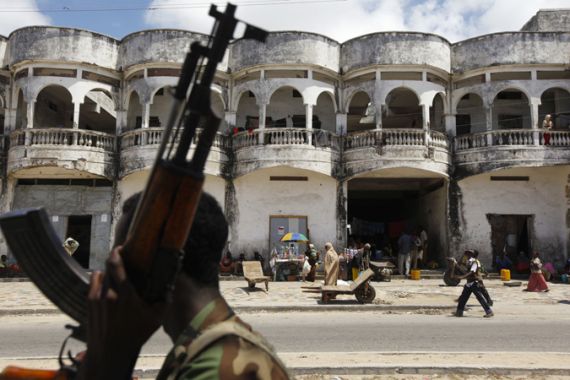Timeline: Somalia’s historic highlights
A brief history of violence in Somalia and its relations with its neighbours.

Somalia’s constituent assembly on Wednesday endorsed a draft constitution billed as a key step to ending decades of civil war.
1991: President Mohamed Siad Barre, in power since 1969, is deposed by rebels and flees the Somalia, as civil war escalates across the country.
1992-1995: The international community intervenes in a bid to end a major famine and restore peace but the United Nations’ mission ends in failure.
During the “Battle of Mogadishu” in 1993, a US helicopter is downed in an event, later portrayed in the film “Black Hawk Down”, that caused lasting trauma that has kept large scale Western forces away to this day.
2000: A national transitional parliament is appointed at talks in neighbouring Djibouti, but most of Somalia’s warlords boycott it.
2002: Amid US fears that Somalia may be becoming a haven for al-Qaeda after the 9/11 attacks, Washington reaches a deal to base forces in Djibouti.
2005: The new government, formed the previous year after protracted talksin Kenya, enters the country but is still unable to go to Mogadishu, which is controlled by Islamist fighters and warlords. It sets up in the town of Baidoa.
2006: Ethiopian troops stage a US-baked invasion to topple militia forces from the hardline Islamic Courts Union, which controls much of southern Somalia, many of whose fighters which will form the Shebab insurgent group.
2007: An African Union force – AMISOM – is deployed in Mogadishu.
January 2009: Ethiopia retreats from Somalia. Days later, the Shebab seize Baidoa as the UN holds talks in Djibouti with the Somali parliament, a meeting aimed to rally former Islamic Courts leaders.
Islamist leader Sheikh Sharif Sheikh Ahmed becomes president of the transitional administration.
2010: The Shebab proclaim their allegiance to al-Qaeda. They claim responsibility for an attack in Kampala in which 76 died, in retaliation for Uganda’s role in AMISOM.
August 2011: The Shebab abandon most of their positions in Mogadishu.
October 2011: At least 82 die in a suicide attack claimed by the Shebab in Mogadishu.
October-November, 2011: The Kenyan army launches an offensive in south Somalia against the Shebab. Ethiopian troops also later invade once again.
February 2012: Ethiopian and Somali troops capture Baidoa from the Shebab, one of several key losses for the fighters, who still control a large slice of southern Somalia.
June 2012: Kenyan troops are integrated into the AMISOM, bringing the force to 17,000.
August 1, 2012: Somalia’s constituent assembly endorses a draft constitution. The end of the mandate of the graft-riddled government on August 20 is seen as a key step in reestablishing central authority in the country.